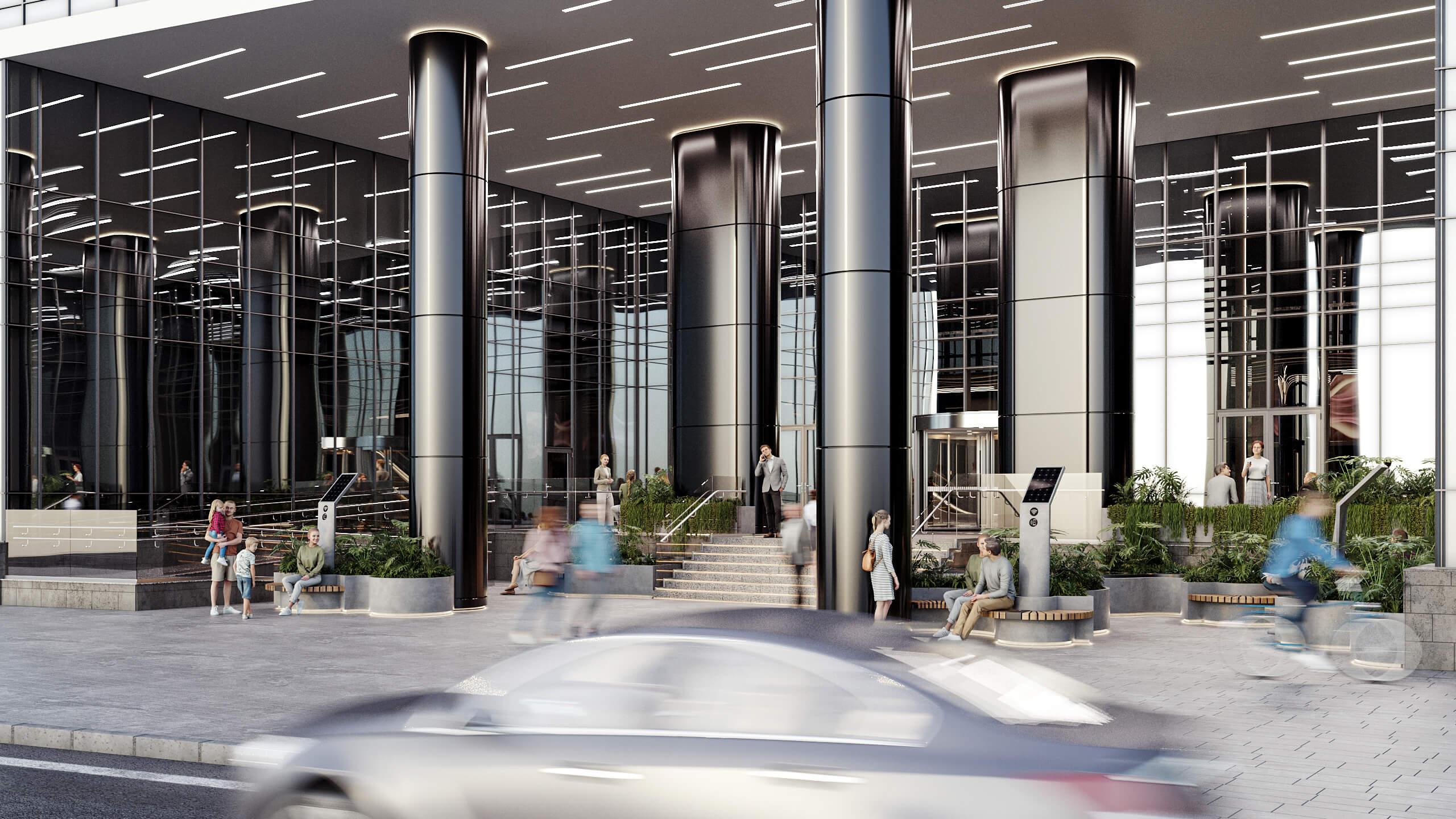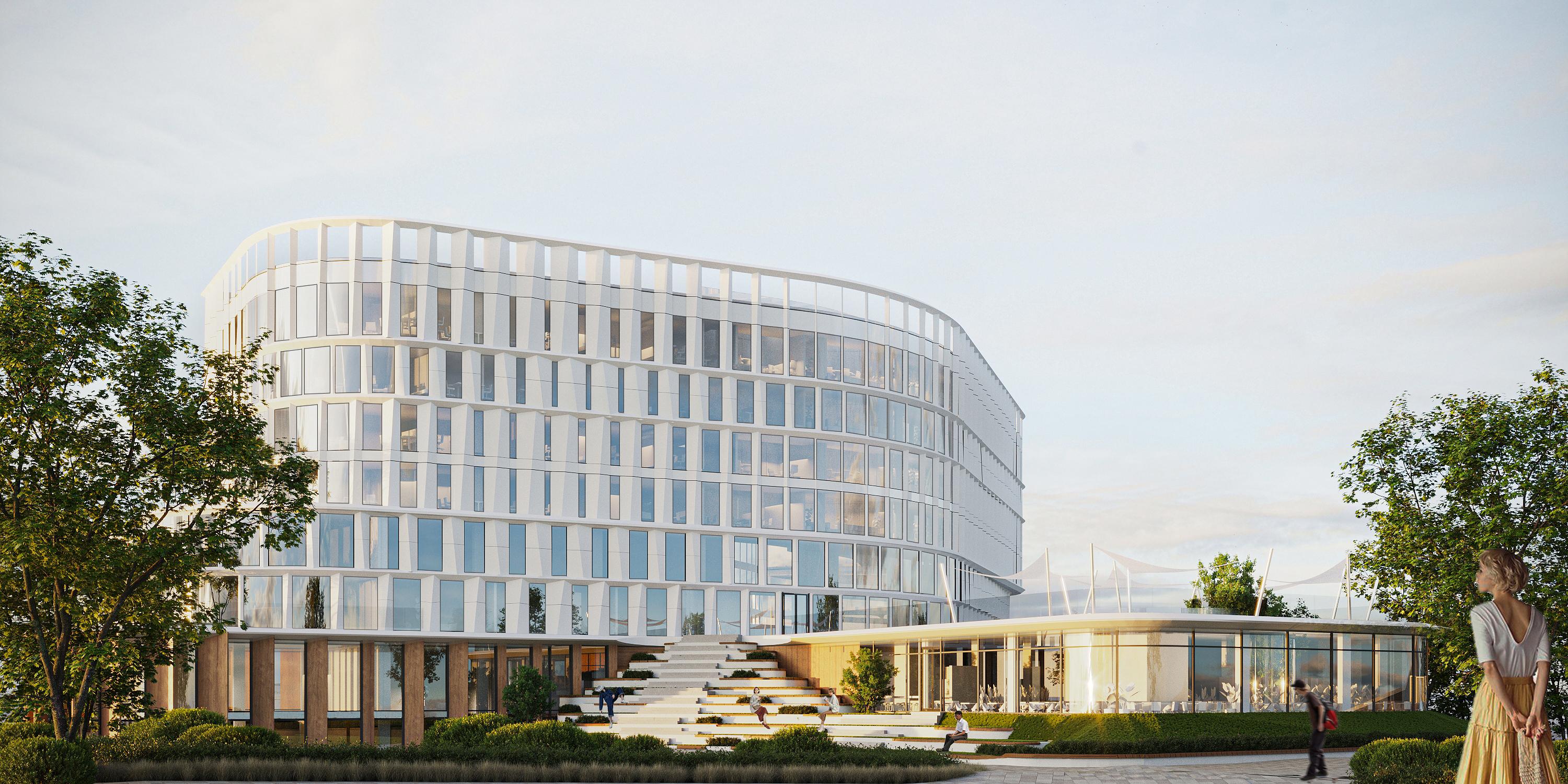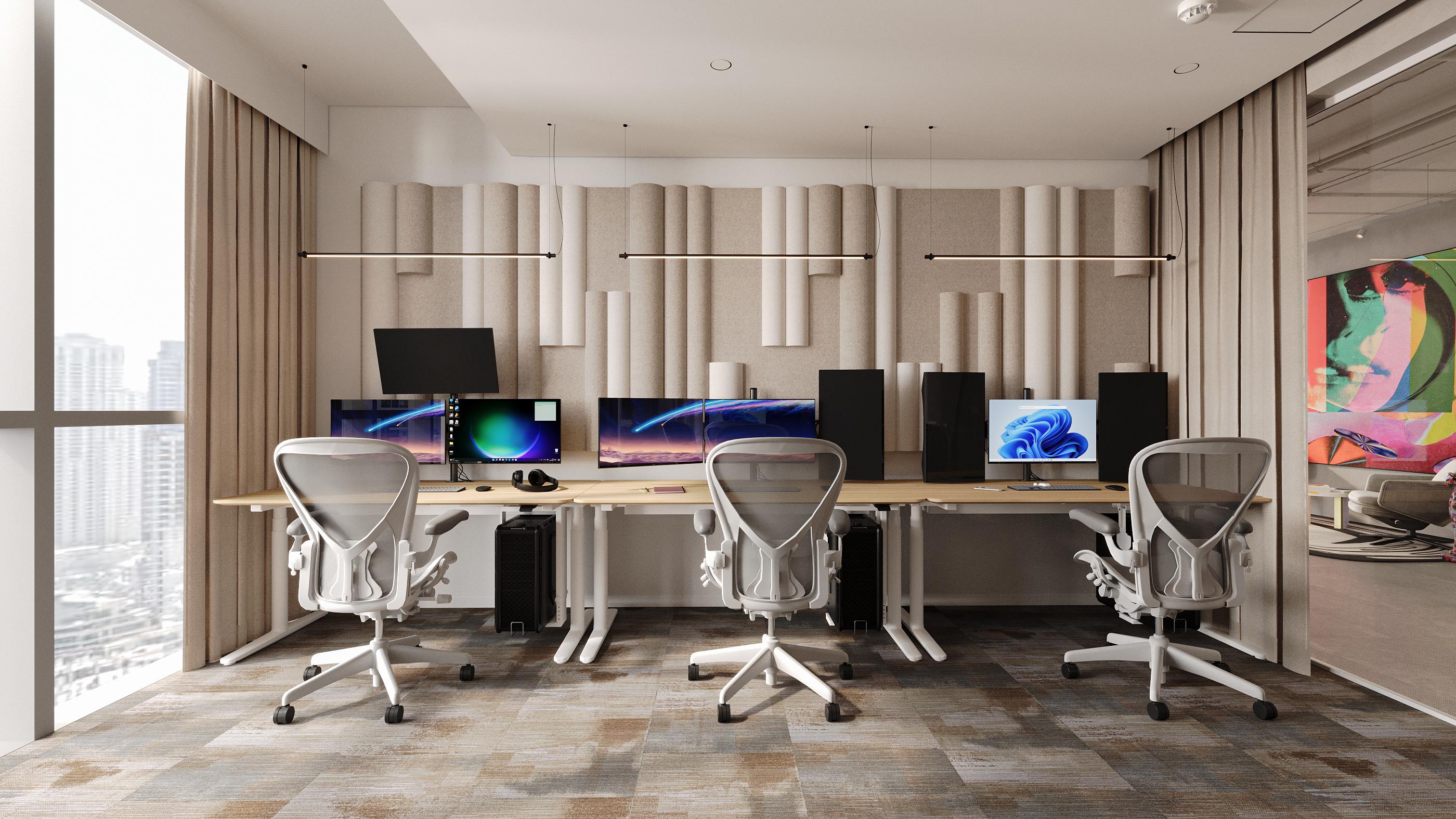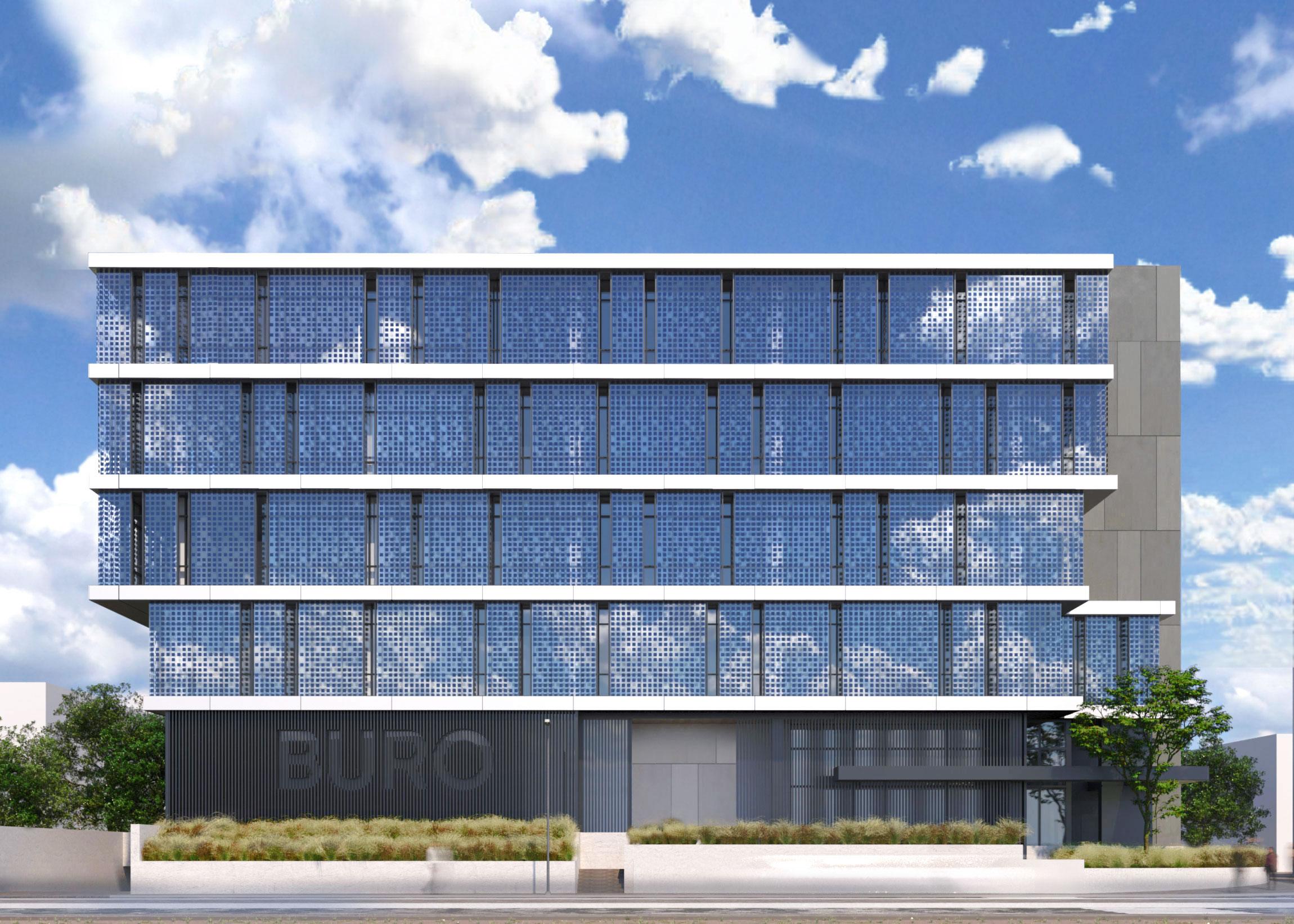We do not make walls and ceilings. We design spaces where ideas are born, contracts are signed and the environment around us changes,' says Alesya Karnaukhova, head of ZIKZAK Architects.
For 11 years, her team has developed more than 350 commercial projects - from the interiors of cosy hotels to the architecture of multi-storey business centres. A successful commercial space requires an integrated approach that combines three types of thinking: systemic, design thinking and linear. This multi-level approach makes projects visually appealing, functional, comfortable for users and effective tools for generating revenue.

Entrance area of a business centre. Design by ZIKZAK Architects
When a city becomes a partner
The first thing we do when we receive a new project is to look beyond the site. We analyse how the development will affect the neighbourhood, the district and the city itself. A shopping centre can either revitalise a neighbourhood by becoming a magnet, or it can become a barrier that divides the area. Systems thinking helps us anticipate the flow of people and traffic, integrate energy networks, plan public realm and create spaces that really work.

Office building. Design by ZIKZAK Architects
People are more important than square metres
Starting with space planning is not the best solution in commercial architecture. The right approach is to first understand how people will use the space, to develop a scenario of future life in it.
When we designed an office for an IT company, we spent a week observing the team at work, rather than just designing open space. It turned out that the developers spent % of their time in informal discussions. This completely changed the concept of the space: instead of a standard layout, we created areas for collaboration, places for spontaneous meetings and comfortable work corners near the windows. Design thinking helps make the architecture responsive to real needs. We take into account users' lifestyles, habits, desires and small but important details, such as the convenience of power sockets or the ergonomics of furniture.

Office. Design by ZIKZAK Architects
Technologies that turn ideas into reality
Creativity is wonderful, but without technological perfection it is worthless. Linear thinking turns ideas into clear steps to realisation: from drawings to working documentation, from concepts to technical solutions.
When we worked on a project for a Class A business centre, aesthetics were important. But even more important was the creation of an intelligent building management system that saves % of electrical energy. Thanks to a clear working structure, we were able to implement innovative solutions without sacrificing quality and functionality.

Business Centre. Design by ZIKZAK Architects
A successful commercial space is the result of a combination of strategic vision, attention to user needs and technical excellence. Systems thinking helps to see each project in a broader context, design thinking ensures that it meets real needs, and linear thinking ensures accurate and efficient implementation. By integrating and combining these approaches, it's possible to create flexible, comfortable and durable spaces that not only work, but change cities for the better.
Read also:

